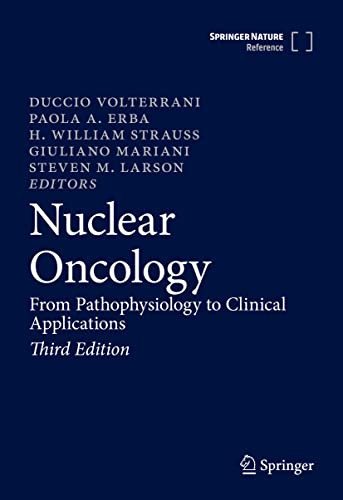

Most ebook files are in PDF format, so you can easily read them using various software such as Foxit Reader or directly on the Google Chrome browser.
Some ebook files are released by publishers in other formats such as .awz, .mobi, .epub, .fb2, etc. You may need to install specific software to read these formats on mobile/PC, such as Calibre.
Please read the tutorial at this link: https://ebookbell.com/faq
We offer FREE conversion to the popular formats you request; however, this may take some time. Therefore, right after payment, please email us, and we will try to provide the service as quickly as possible.
For some exceptional file formats or broken links (if any), please refrain from opening any disputes. Instead, email us first, and we will try to assist within a maximum of 6 hours.
EbookBell Team

0.0
0 reviewsThis book discusses the role of nuclear medicine in the diagnosis, staging, and treatment of patients with specific cancers. It presents the incidence, pathophysiologic and clinical aspects of the disease, the use of nuclear imaging in diagnosis, staging requirements, management of specific tumors, and surveillance after primary treatment of cancers. It addresses the various diagnostic/therapeutic options that are currently available or are most likely to become available in the near future according to a prioritized approach, thereby keeping to a minimum the number of diagnostic imaging procedures the patient is expected to undergo.
Topics include basic science, clinical applications, radionuclide therapy, radioguided surgery, heart disease in the cancer patient, and adverse effects of cancer therapy. Each clinical chapter discusses the radionuclide procedures within an integrated framework, thereby identifying the information required for effective treatment of specific tumors. The book concludes with a series of updated cases that define and expand the didactic material in the clinical application chapters. Thoroughly updated and revised, the third edition incorporates new clinical evidence validating the use of radionuclides for diagnosis and therapy in oncology, new radiotracers, and the growing integration of imaging modalities into different types of hybrid imaging.
With contributions from a group of internationally distinguished practitioners,Nuclear Oncology: From Pathophysiology to Clinical Applications,Third Edition,is a valuable reference for nuclear medicine physicians, radiologists, medical and surgical oncologists, and other clinicians involved in the care and management of cancer patients.